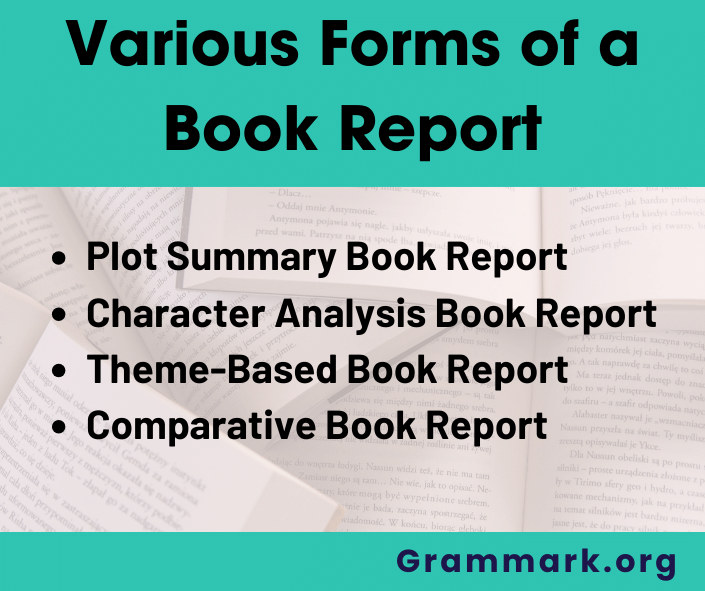Writing a book report may seem daunting, but with the right approach, it can be a straightforward and rewarding experience.
As someone who has mastered the art of writing a book report, I’m here to provide you with a step-by-step guide on how to write a book report. Whether you’re new or experience, follow along!
What is a Book Report?
A book report summarizes and analyzes a book’s content, providing an overview of the plot, characters, themes, and your evaluation.
Additionally, a book report often explores the main characters, motivations, and roles in the story. It delves into the book’s themes, messages, and the author’s writing style, discussing how these elements contribute to the book’s overall impact.
A book report may also contain the writer’s evaluation and opinion, reflecting their thoughts on the book’s strengths, weaknesses, and relevance.
It is an excellent way to showcase your understanding of the book and demonstrate your critical thinking skills. Book reports are commonly assigned in schools and serve as a valuable exercise in literary analysis.
What are the various forms of a Book Report?
There are several different forms of book reports, and the type you choose will depend on the guidelines provided by your instructor. Some common forms of book reports include:

- Plot Summary Book Report:
This type of book report focuses primarily on summarizing the book’s plot. It should provide a concise story overview, including the main events, conflicts, and resolution. You can also include your thoughts and opinions on the plot and whether it effectively conveyed the intended message.
- Character Analysis Book Report
In this form of book report, the emphasis is on analyzing the characters in the book. You should delve into the main characters’ personalities, motivations, and development and their impact on the story.
Additionally, you can include examples from the book to support your analysis and provide insight into the character’s actions and decisions.
- Theme-Based Book Report
Theme-based book report explores the themes and messages conveyed in the book. It requires a deeper analysis of the underlying ideas and concepts explored by the author.
To write this type of report, you should identify the major themes in the book and discuss how they are developed throughout the story. You can also include your thoughts and opinions on the themes and what they mean to you.
- Comparative Book Report
A comparative book report compares and contrasts two or more books with similar themes or subject matter. It requires a careful analysis of how the books relate to each other and what sets them apart.
In this type of report, you should focus on the similarities and differences between the books and how they address the themes or subject matter. You can also include your thoughts and opinions on which book effectively conveyed the intended message.
How to Write a Book Report: Step-by-Step Guide
Now that you have an overall idea about the different forms of a book report let’s explore how to write a book report precisely.
1. Choose the Book
The first step is to select a book on which you want to write a report. It’s important to choose a book that is appropriate for the assignment’s requirements and aligns with your interests or the subject matter.
2. Read the Book Thoroughly
Before you start writing, read the book attentively. Take notes on important plot points, characters, themes, and any significant details that stand out to you. It’s essential to thoroughly understand the book’s content before attempting to analyze and interpret it.
3. Introduction
Begin your book report with an engaging introduction. Include the book’s title, author, genre, and a brief overview of what the book is about. This is your chance to hook the reader’s interest and set the tone for your report.
You can also provide some background information on the author or the book’s historical context if it’s relevant.
4. Summary of the Plot
Provide a concise summary of the book’s plot, covering the main events and the central conflict. Be careful not to give away major spoilers; the purpose is to give an overview without revealing too much.
You can also highlight any important subplots or secondary characters that contribute to the story.
5. Character Analysis
Now, you can discuss the main characters in the book, their personalities, motivations, and how they contribute to the story’s development. Use specific examples and quotes from the text to support your analysis.
You can also compare and contrast different characters or explore their relationships with one another.
6. Setting and Context
Explain the setting and context of the story. Describe the time and place in which the events occur, and discuss how these elements influence the plot and characters.
You can also analyze the significance of the setting and how it relates to the themes of the book.
7. Themes and Messages
Explore the central themes and messages conveyed by the author. Discuss the author’s intentions and how these themes are developed throughout the book. Analyze their significance in the overall narrative and how they relate to the characters and the setting.
8. Writing Style and Techniques
Evaluate the author’s writing style and the literary techniques used in the book. Consider elements such as symbolism, foreshadowing, and imagery.
Discuss how these techniques enhance the story’s impact and contribute to the book’s overall meaning.
9. Comparisons (Optional)
You can compare the book with other works by the same author or books of a similar genre if applicable. Analyze similarities and differences, and offer insights into the author’s recurring themes or writing style.
This can help you provide a broader context for the book and deepen your analysis.
10. Personal Opinion
Sharing a personal opinion of the book will be ideal. You can talk about what it is that you liked or disliked about the book and point out your reasons.
Support your opinions with text evidence, such as specific scenes or character developments. Your opinion is essential to the book report, demonstrating your engagement with the material and your critical thinking skills.
11. Conclusion
Summarize the key points of your book report and restate your overall impression of the book. Provide a thoughtful closing statement that leaves the reader with a lasting impression.
You can also offer some final thoughts on the book’s significance or its relevance to contemporary issues.
12. Proofreading and Editing
After writing the report, carefully proofread and edit your work to correct any grammar, spelling, or punctuation errors. Make sure that the report flow is logical and coherent. You can always use Grammarly to check for the proof-reading purpose.
Unsure if Grammarly Premium suits your needs? Then you are at luck, Grammarly provides its users with a 7-day free trial.
13. Citation (if necessary)
If required, include a bibliography or works cited page to give credit to the sources you used while writing the report. This is important to avoid plagiarism and to demonstrate your research skills. Here I have mentioned the best plagiarism checker in the market.
14. Finalize and Submit
Once you have thoroughly reviewed and edited your book report, finalize it and submit it according to your instructor’s guidelines. Congratulations—you have successfully written a comprehensive and insightful book report!
Related Read:
Conclusion: Learn How To Write A Book Report
Writing an effective book report requires closely reading the book, developing a thesis, organizing your thoughts, and drafting an analysis of the key elements of the text.
Be sure to include relevant details from the work to support your central ideas.
Carefully proofread your report and make any necessary revisions to create a polished final product. With proper planning and an organized approach, students can master the art of writing engaging and insightful book reports.
I hope this step-by-step guide provided tips to help you successfully draft your next book review assignment.
FAQs
The format of a book report typically includes an introduction, a summary of the plot, a character analysis, themes and messages, an evaluation/opinion, and a conclusion.
The length of a book report can vary depending on the assignment’s requirements, but typically it ranges from 500 to 2000 words.
Including quotes from the book can enhance your report, especially when providing evidence to support your analysis and opinions.
While it’s possible to write a book report without reading the entire book, it is strongly recommended to read the complete book to provide a comprehensive and accurate analysis.
Yes, using first-person pronouns is acceptable in a book report as it allows you to express your personal opinions and thoughts about the book.


